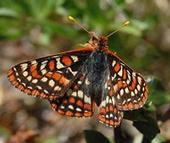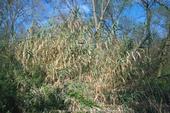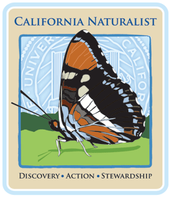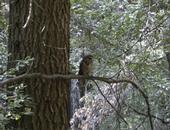- Author: Jeannette E. Warnert

The University of California will break ground on the new 5,000-square-foot building this fall. In addition to providing meeting facilities for 200 and display space for a collection of natural and Native American museum pieces, the building itself will be a model of integrated green design, according to center director
- Author: Jeannette E. Warnert

The Sierra Nevada and Coastal Range foothills are replete with wide open spaces - a home for birds and other wildlife, majestic oaks and grazing cattle. The bucolic countryside vistas that come courtesy of California’s ranchers are among the many public benefits of rangeland grazing.
“The public doesn’t always realize what ranchers are doing and how that benefits everyone,” said Bill Tietje, UC Cooperative Extension natural resources specialist based in San Luis Obispo County. “No one really thinks about it, until it’s gone.”
Many rangeland benefits can be grouped as “ecosystem services.” According to scientists:
- Rangeland plays a role in the state’s water cycling. Eighty percent of California water flows...
- Author: Chris M. Webb

In the early 1800s, European immigrants introduced the fast-growing giant reed arundo (Arundo donax) into California to use the canes for musical instruments. The plants were also used for erosion control and the reeds used for thatched roofing. However, it has since naturalized and become a serious pest in the state's natural waterways.
Arundo can grow at a rate of four inches per day and can reach heights of 30 feet. It reproduces and spreads when sections of the stem or root break off and float downstream.
Dense stands of arundo displace native riparian species. The plant requires a significant amount of water, reducing fish, wildlife and people. In addition, clumps of arundo and the soil around their roots...
- Author: Jeannette E. Warnert

The University of California’s newly launched California Naturalist program is a way for the institution to spread research-based knowledge about environmental stewardship and nature preservation. Rather than simply educating students, the program engages citizens of all ages through discovery and action in the science of conservation.
After completing the program, California Naturalists will become a committed corps of citizen scientists trained and ready for involvement in natural resources education and restoration.
“To ensure the sustainability of natural resources in California, we need citizens who participate in natural resource conservation, understand the...
- Author: Jeannette E. Warnert

What effect do changes made to the forest - for wildfire management or timber harvest, for example - have on California spotted owl? That question prompted the organizers of the Sierra Nevada Adaptive Management Project (SNAMP) to incorporate an owl team into its wide-ranging effort.
The owl team recently gathered at the UC Blodgett Forest near Georgetown with members of the public and representatives of agencies involved in SNAMP. They explained the scope of the on-going spotted owl research program and the smaller subsection that is part of the SNAMP project.
Project manager Doug Tempel and assistant project...



